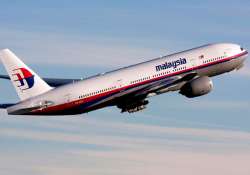Can robots find remains of missing Flight 370?
New York: Robots that can operate under water would now be deployed to search wreckage of the missing Malaysia Airlines Flight 370 for signs deep inside the ocean, according to experts.To look for the plane,

New York: Robots that can operate under water would now be deployed to search wreckage of the missing Malaysia Airlines Flight 370 for signs deep inside the ocean, according to experts.
To look for the plane, the robotic vehicles would use sonar because the water is much too deep to see at those depths.
Sonar is a technique that uses sound propagation to navigate, communicate with or detect objects on or under the surface of the water, such as other vessels.
Such robots - called Autonomous underwater vehicles, or AUVs - located the Air France Flight 447 two years after it crashed in the southern Atlantic Ocean in 2011.
The Australian search vessel looking for the plane has an AUV onboard.
“The AUV, made by Boston-based Bluefin Robotics Corporation and operated by Phoenix International, would probably be deployed soon,” David Gallo, director of special projects at The Woods Hole Oceanographic Institution (WHOI), was quoted as saying.
The Beijing-bound flight disappeared 94 minutes after taking off from Kuala Lumpur International Airport March 8.
The plane's last-known location suggests it likely crashed in the southern Indian Ocean, to the west of Australia.
The Bluefin submersible is rated for a depth of only about 4,500 metres.
“The Indian Ocean's surface conditions would be an added challenge for any autonomous underwater vehicle launch and recovery, and possibly for towed sonar systems,” Mike Purcell, WHOI's principal engineer, said in a statement.
To look for the plane, the robotic vehicles would use sonar because the water is much too deep to see at those depths.
Sonar is a technique that uses sound propagation to navigate, communicate with or detect objects on or under the surface of the water, such as other vessels.
Such robots - called Autonomous underwater vehicles, or AUVs - located the Air France Flight 447 two years after it crashed in the southern Atlantic Ocean in 2011.
The Australian search vessel looking for the plane has an AUV onboard.
“The AUV, made by Boston-based Bluefin Robotics Corporation and operated by Phoenix International, would probably be deployed soon,” David Gallo, director of special projects at The Woods Hole Oceanographic Institution (WHOI), was quoted as saying.
The Beijing-bound flight disappeared 94 minutes after taking off from Kuala Lumpur International Airport March 8.
The plane's last-known location suggests it likely crashed in the southern Indian Ocean, to the west of Australia.
The Bluefin submersible is rated for a depth of only about 4,500 metres.
“The Indian Ocean's surface conditions would be an added challenge for any autonomous underwater vehicle launch and recovery, and possibly for towed sonar systems,” Mike Purcell, WHOI's principal engineer, said in a statement.